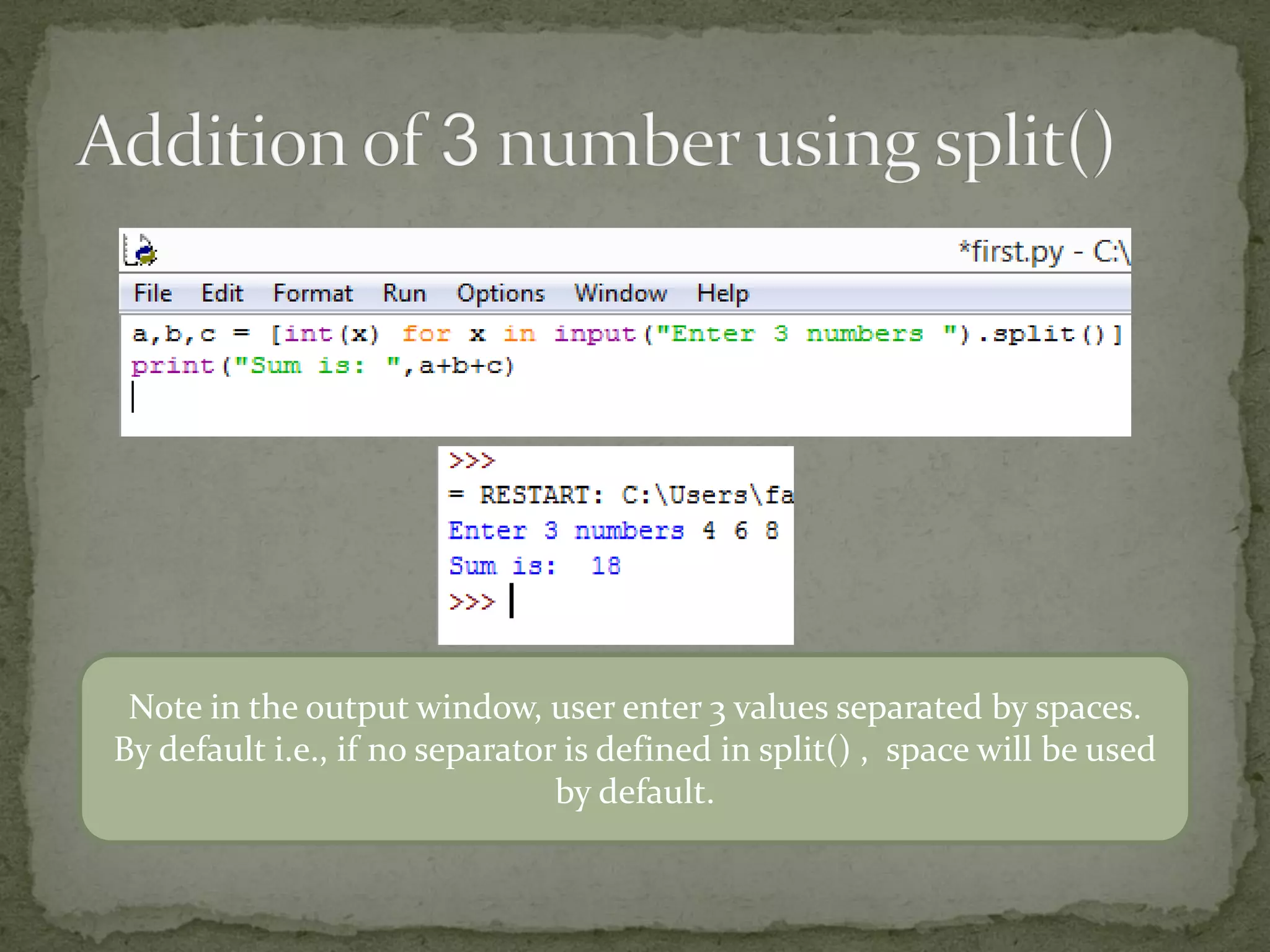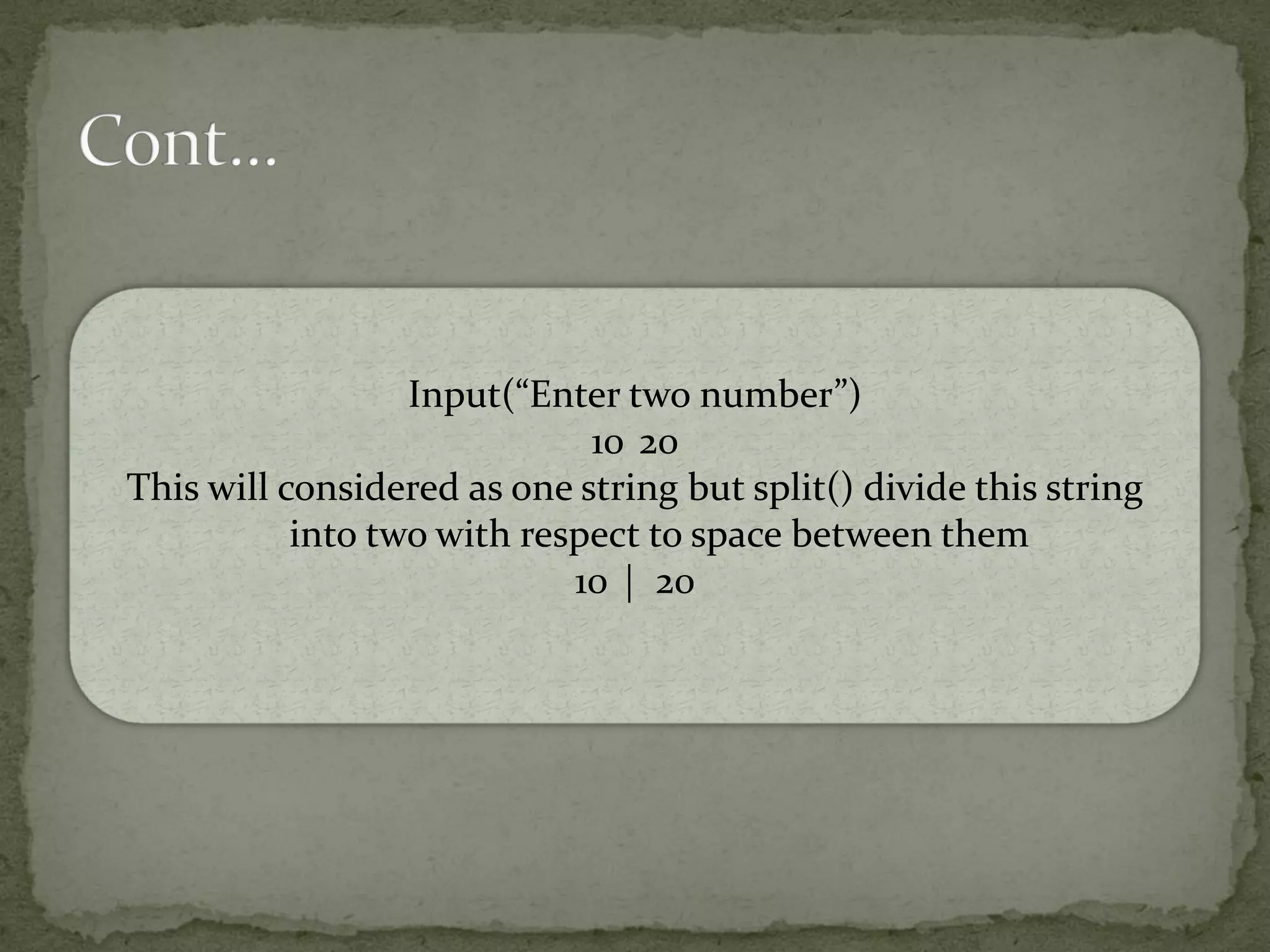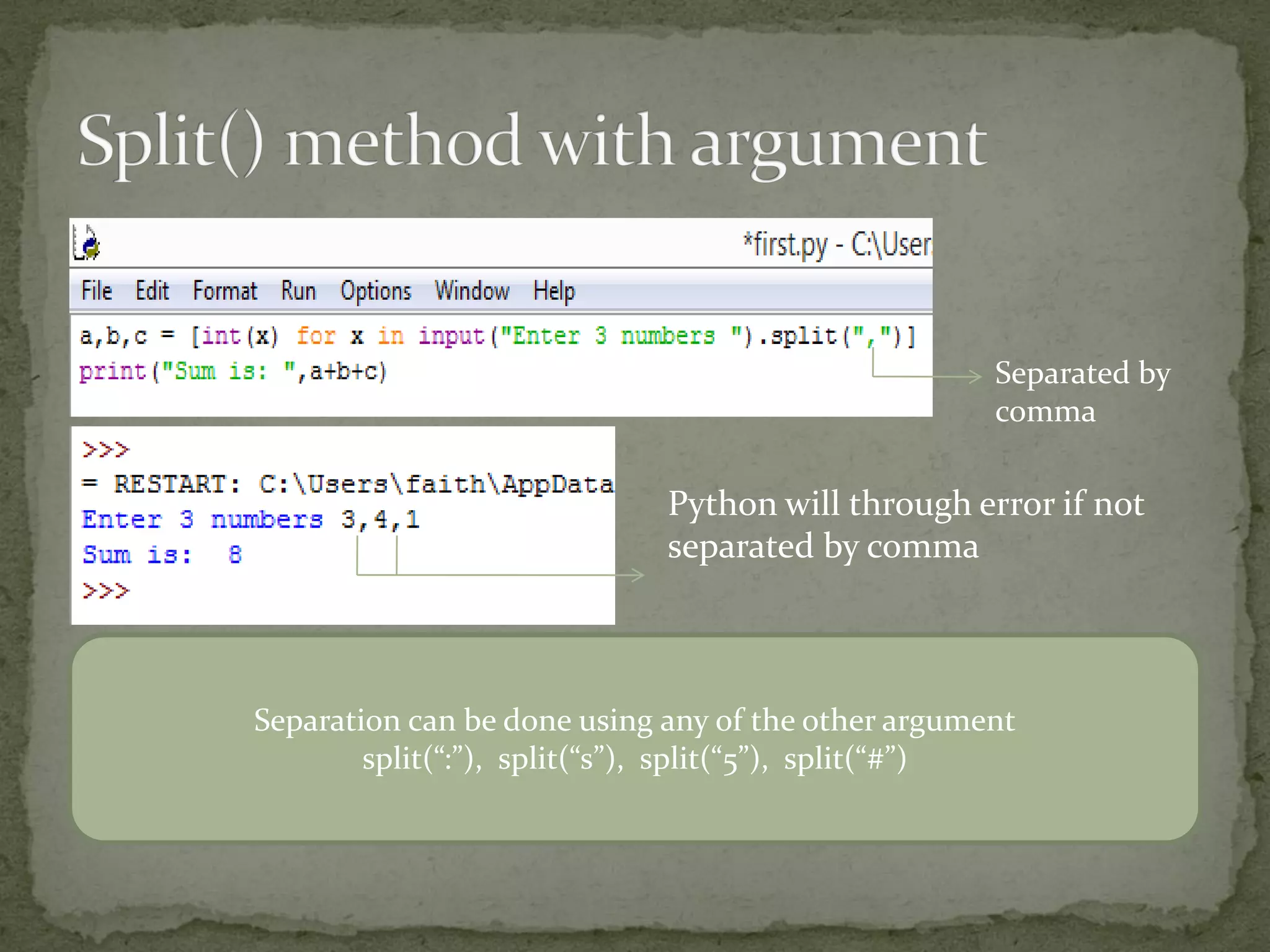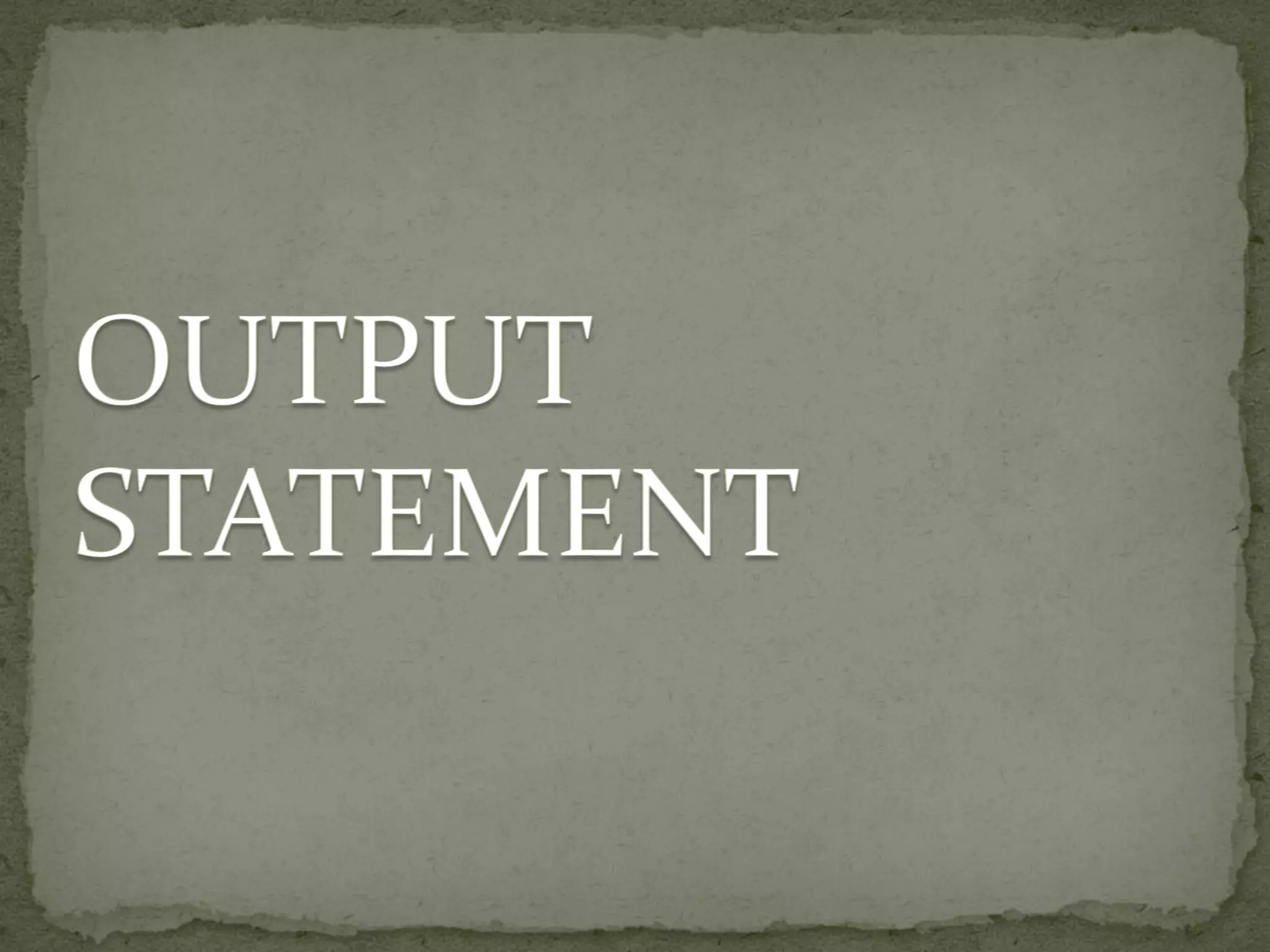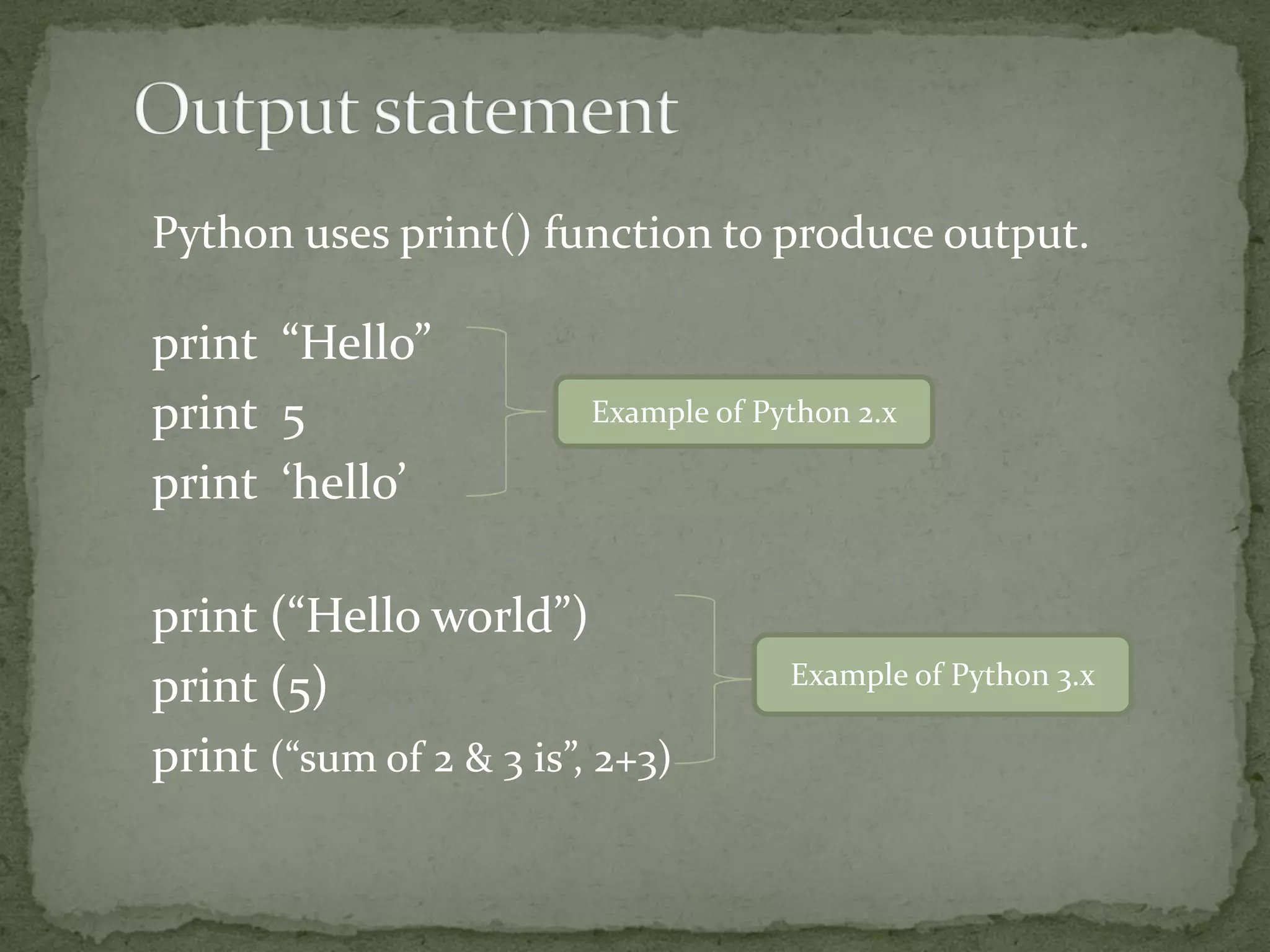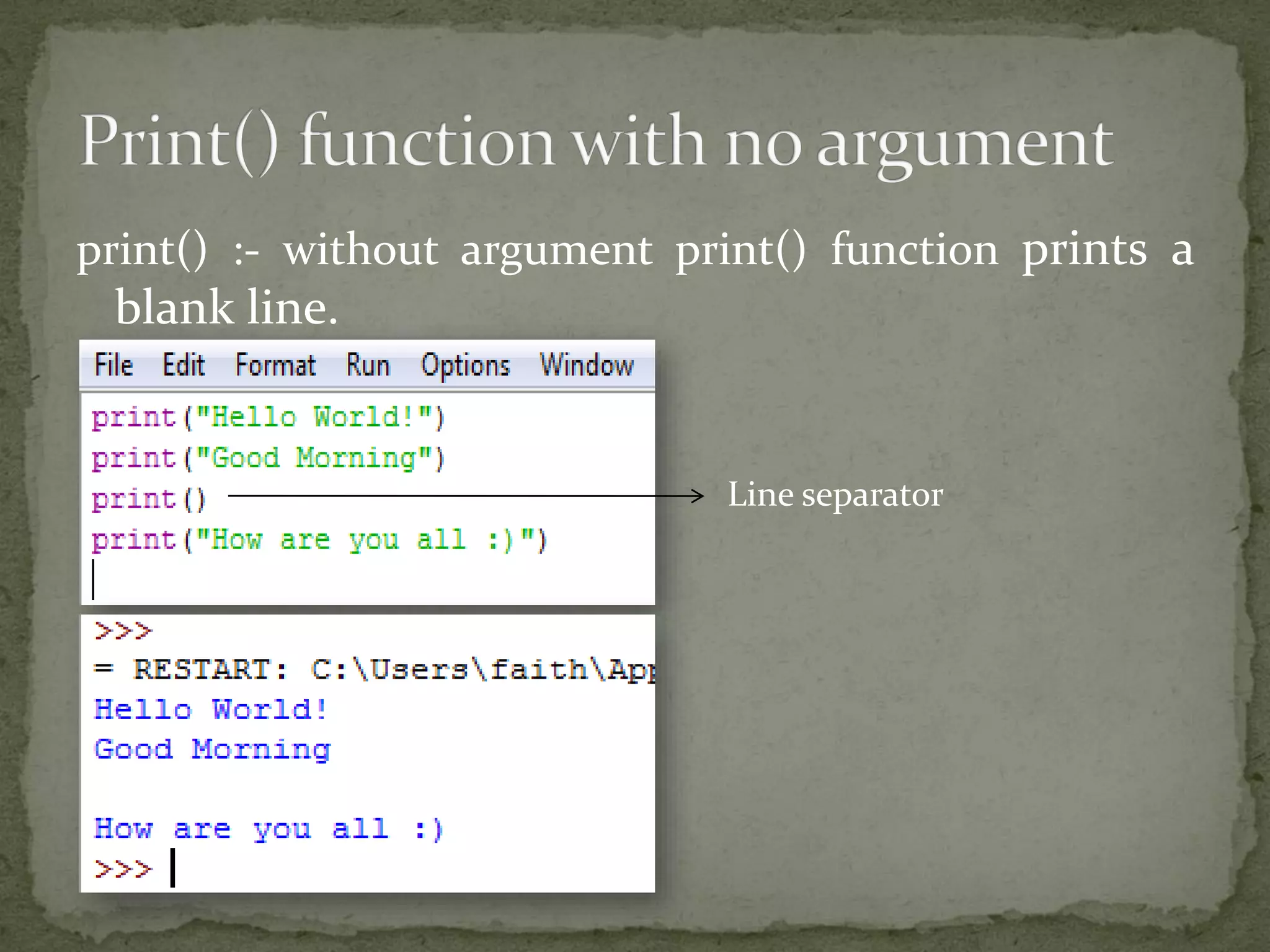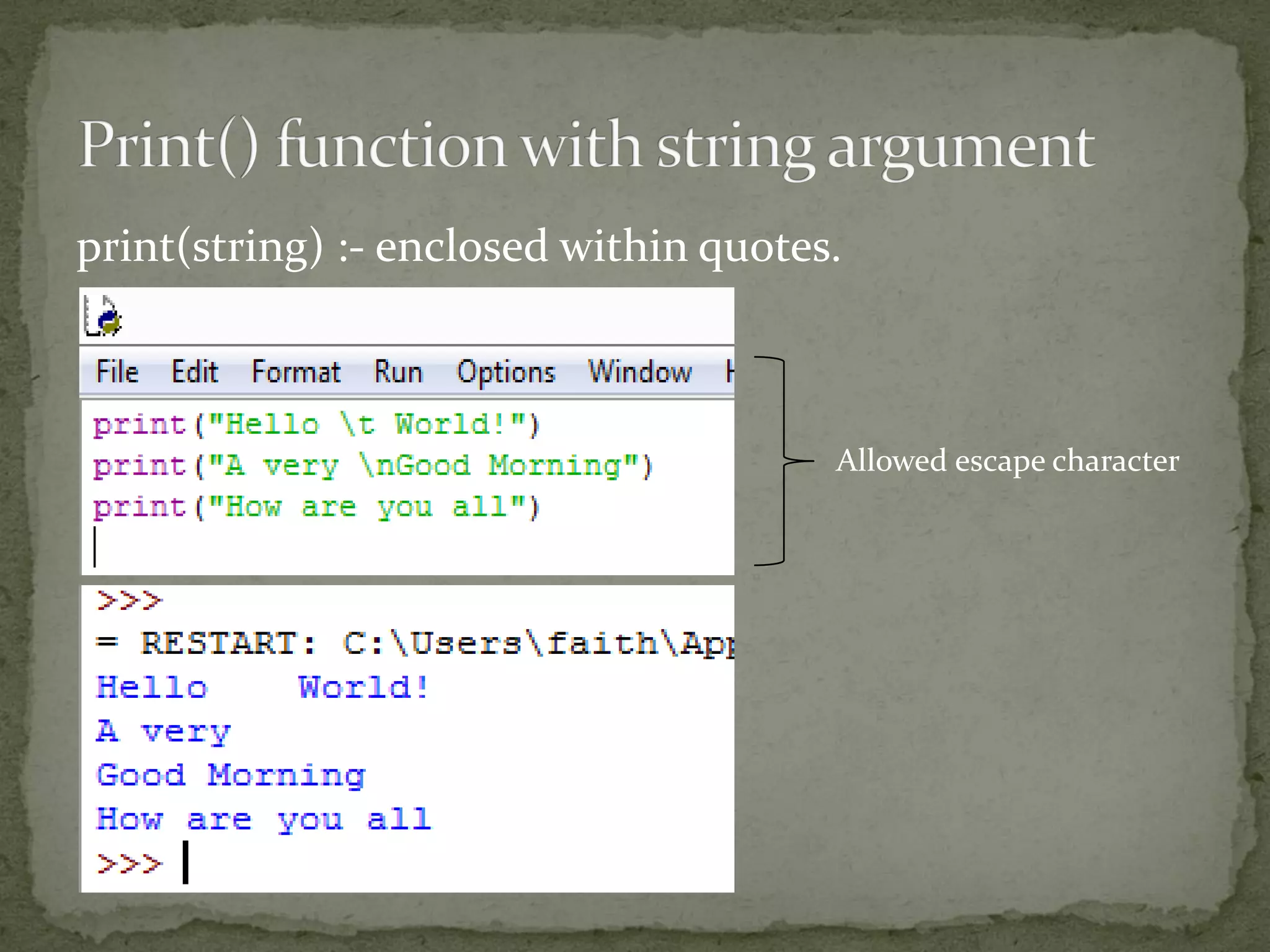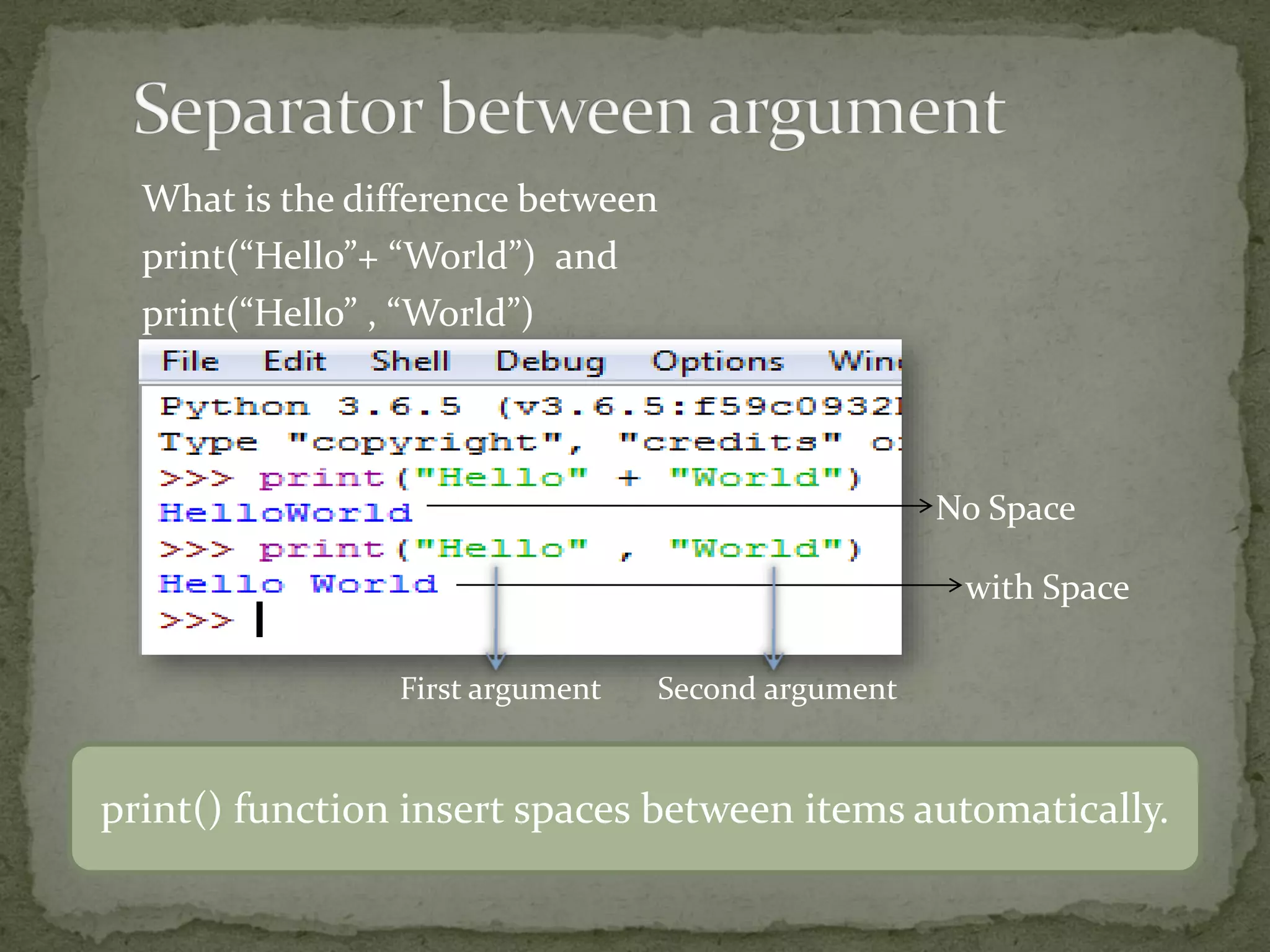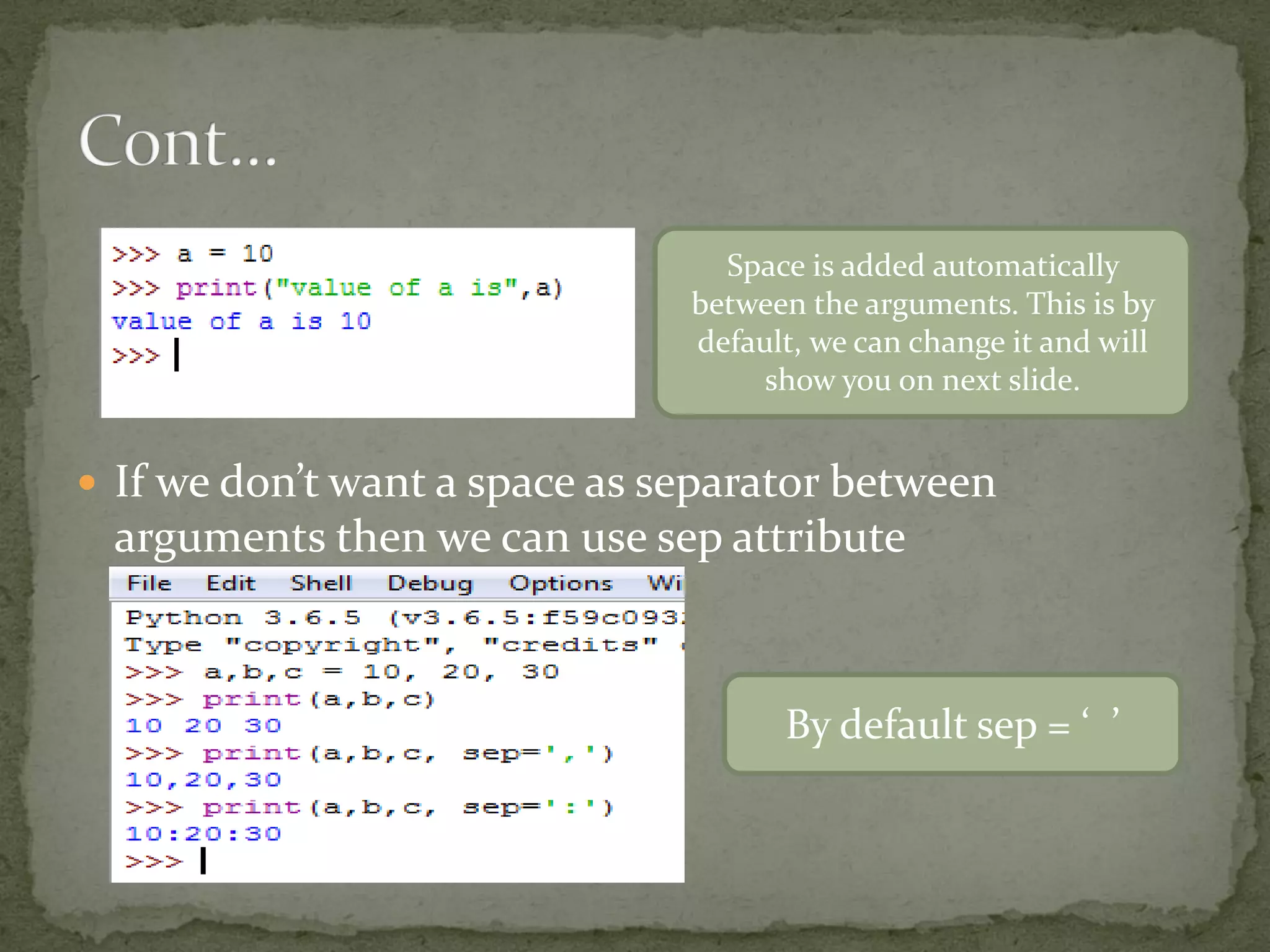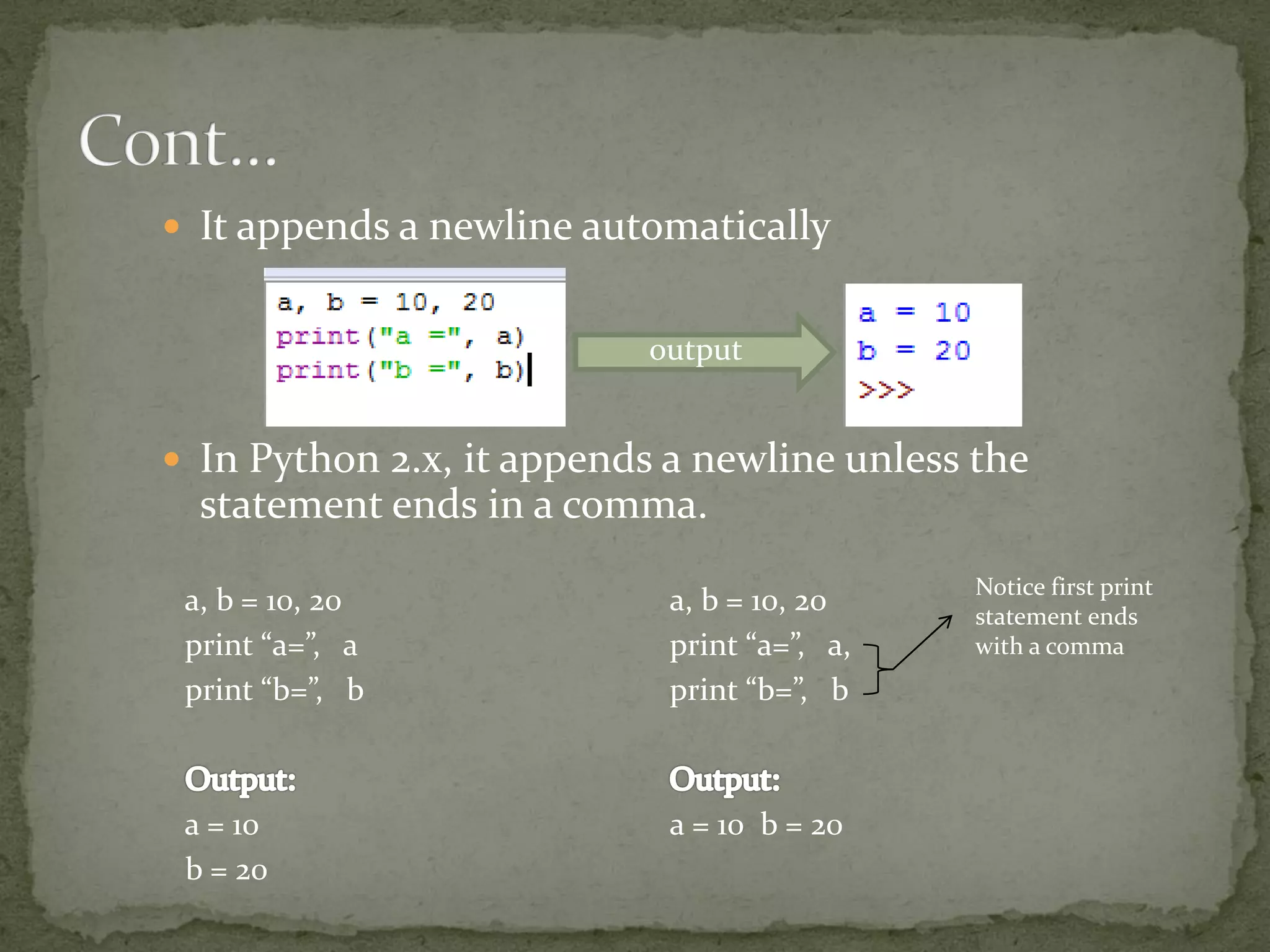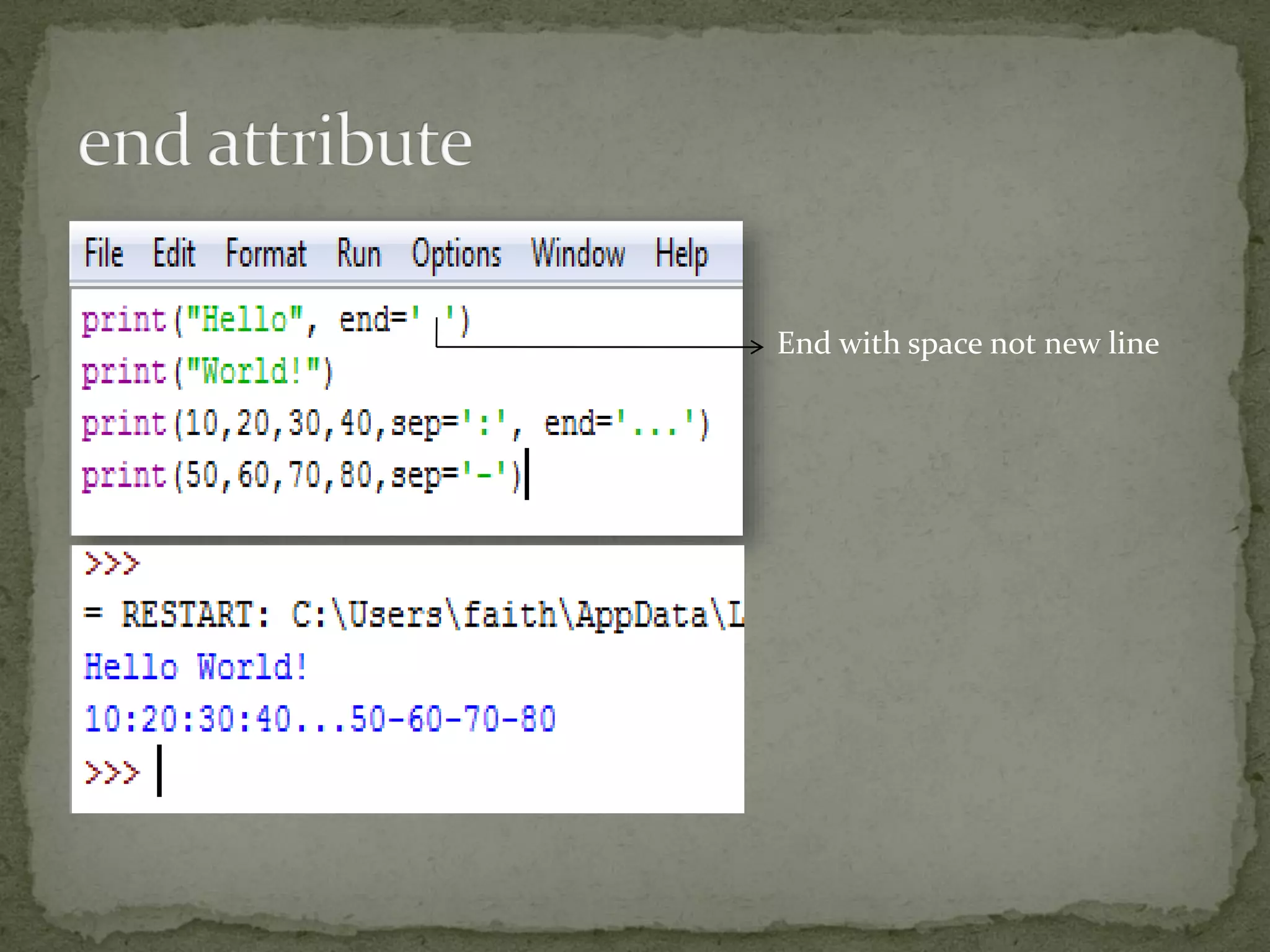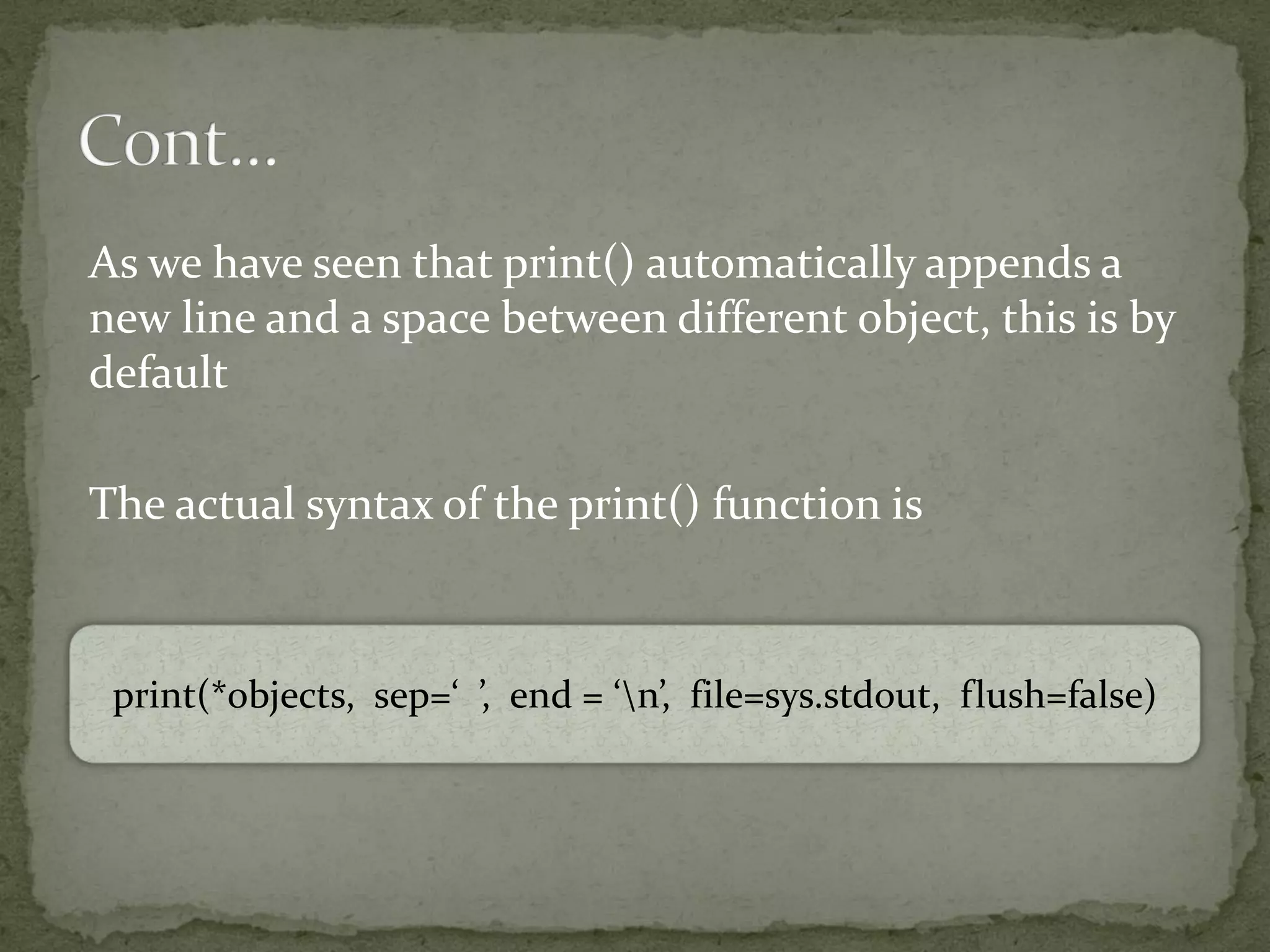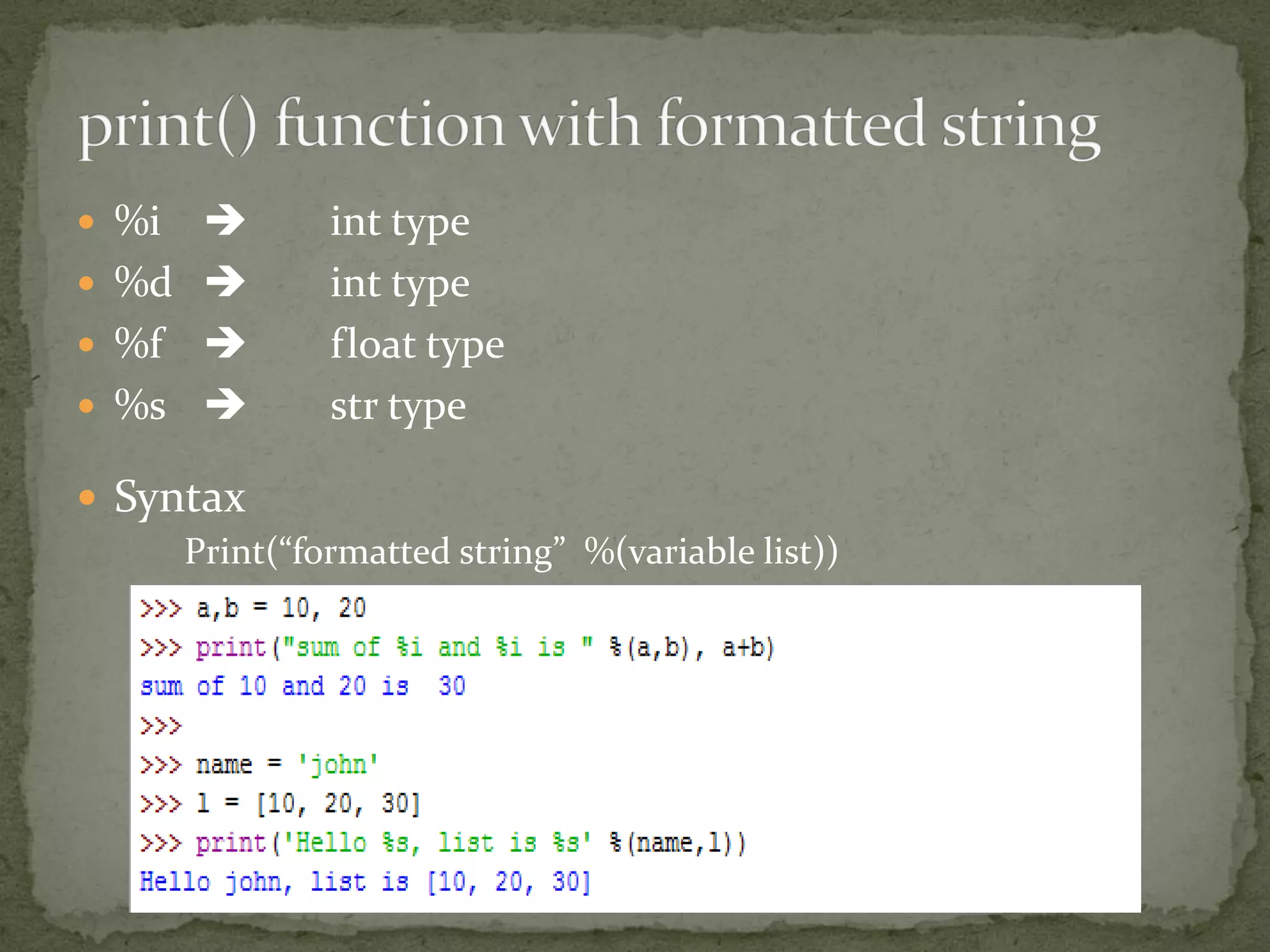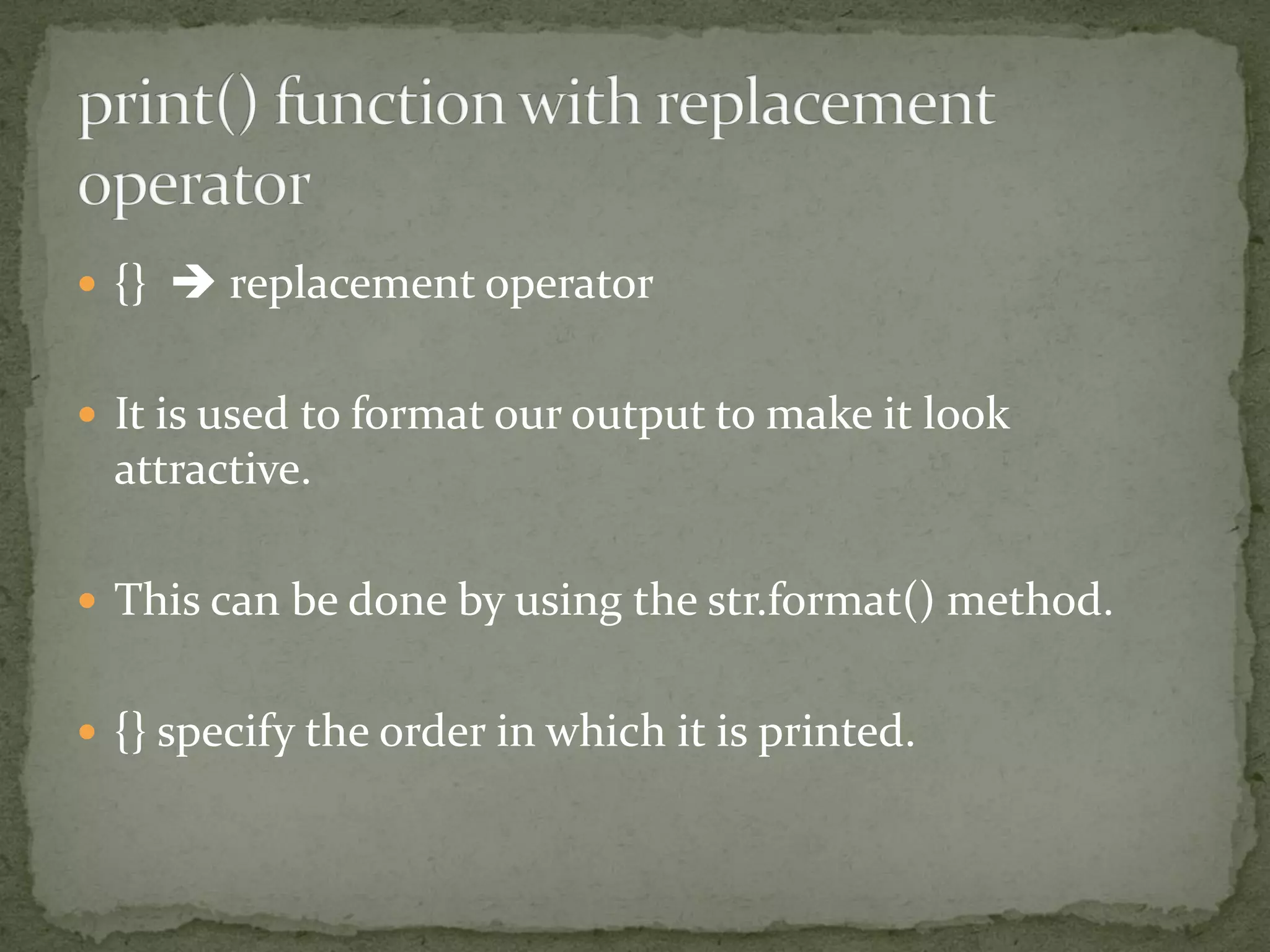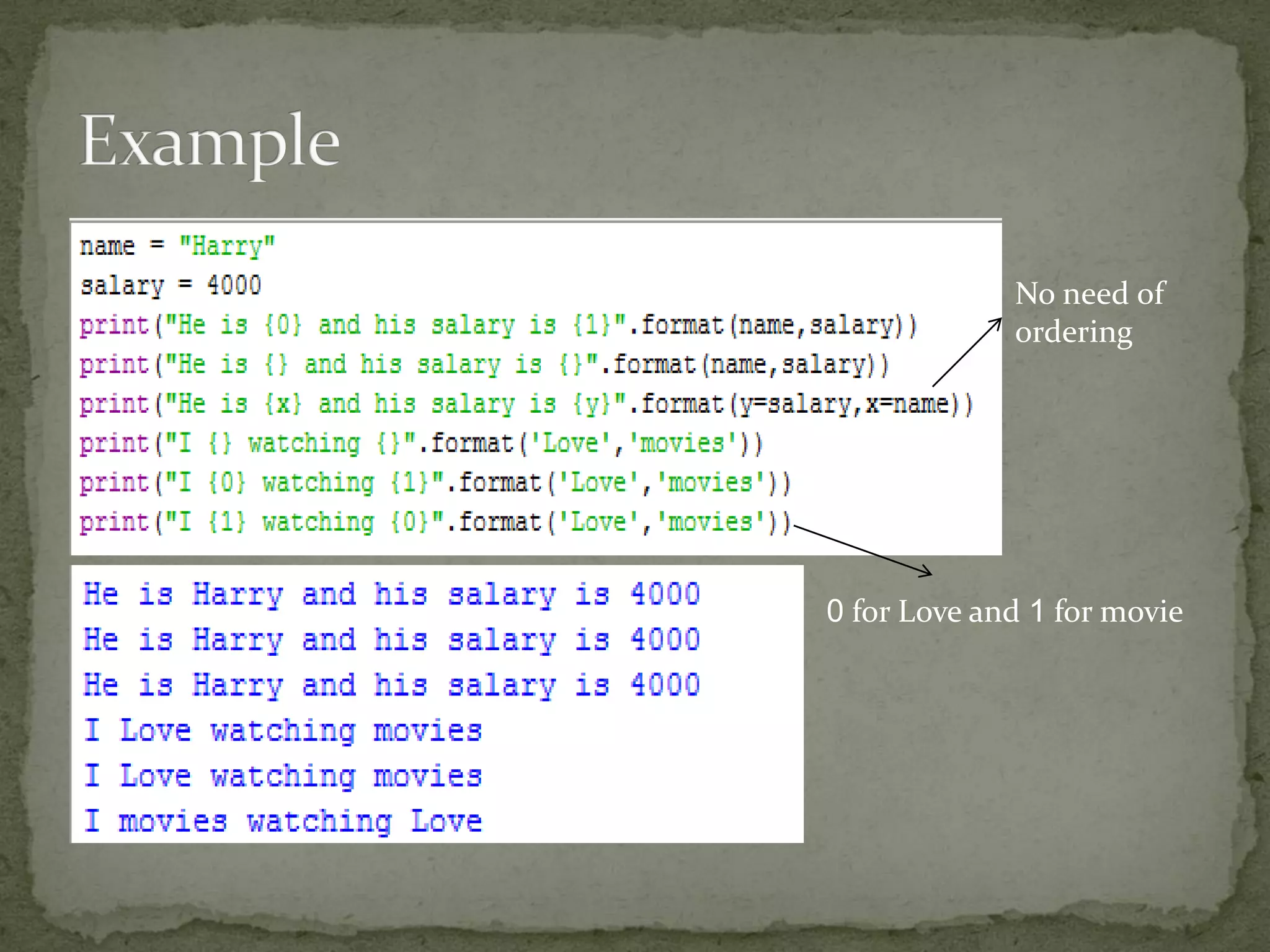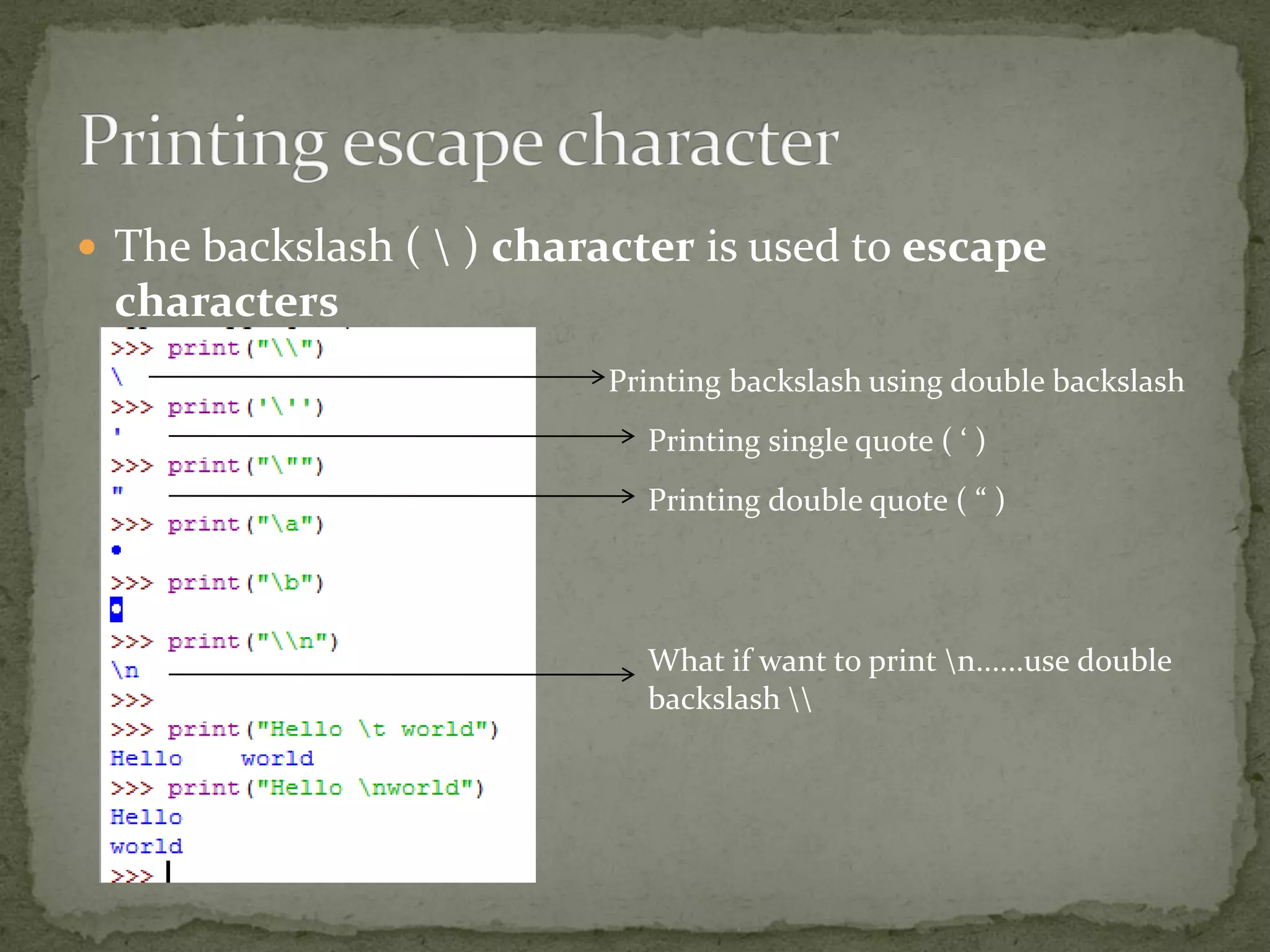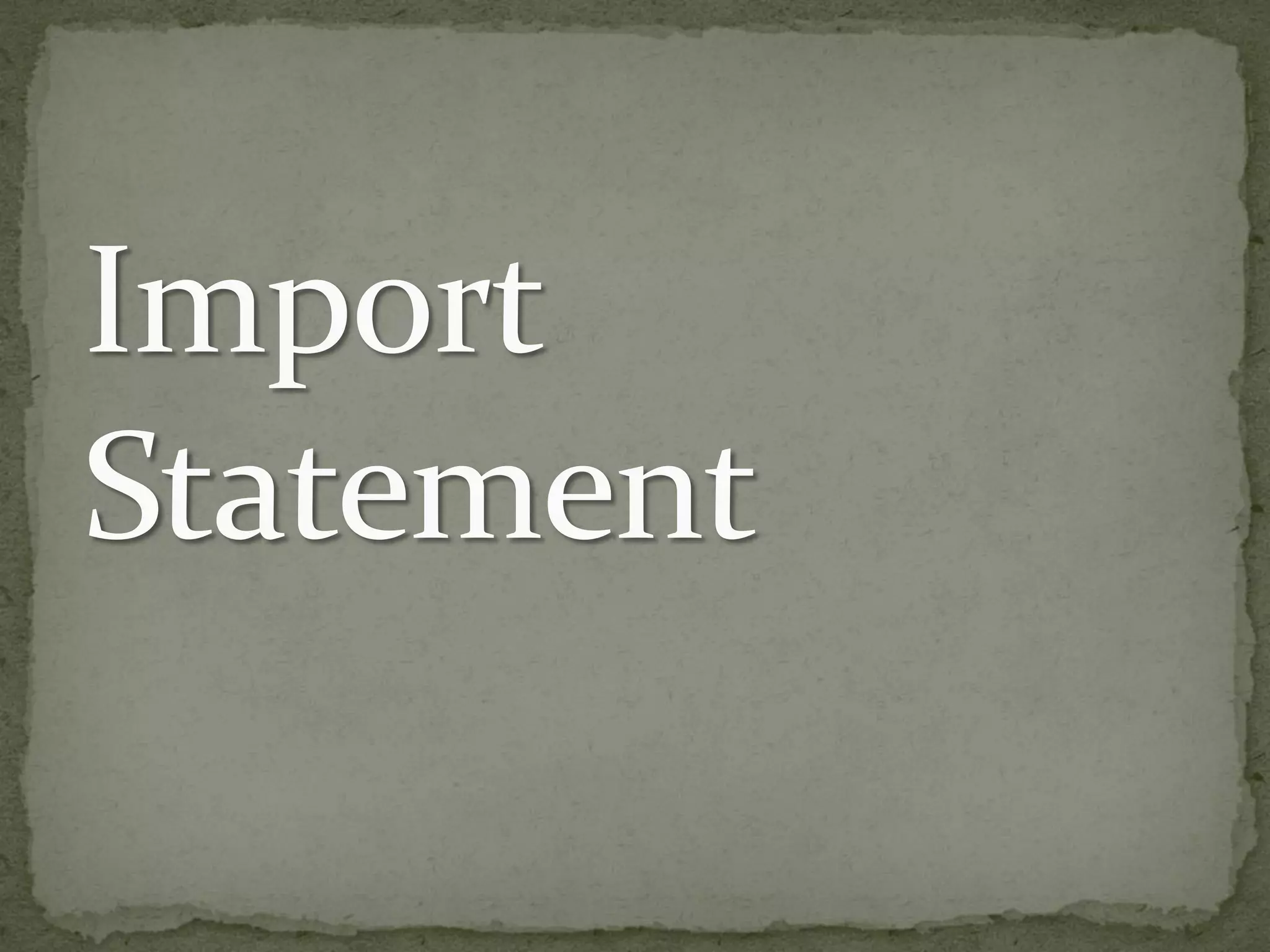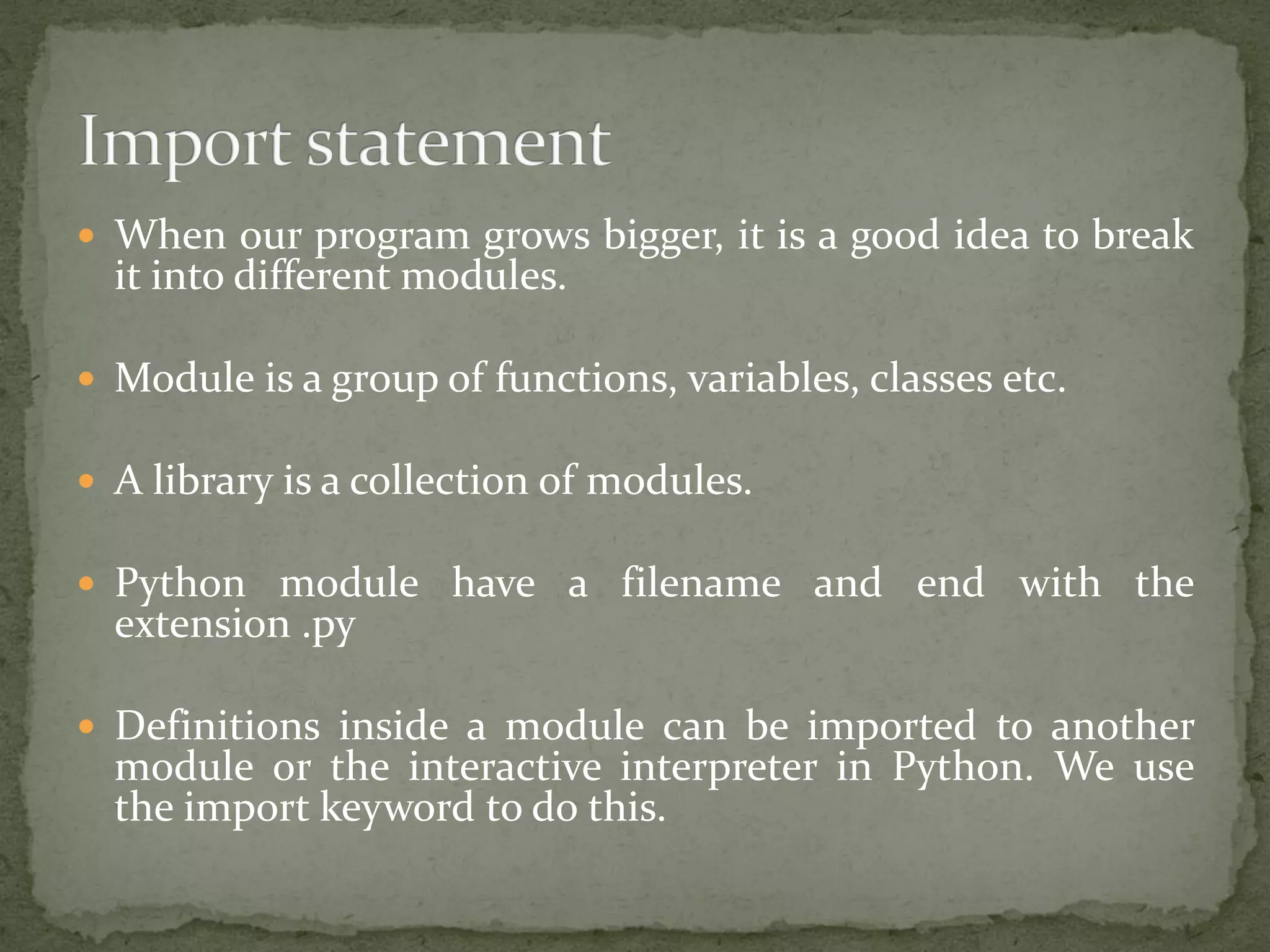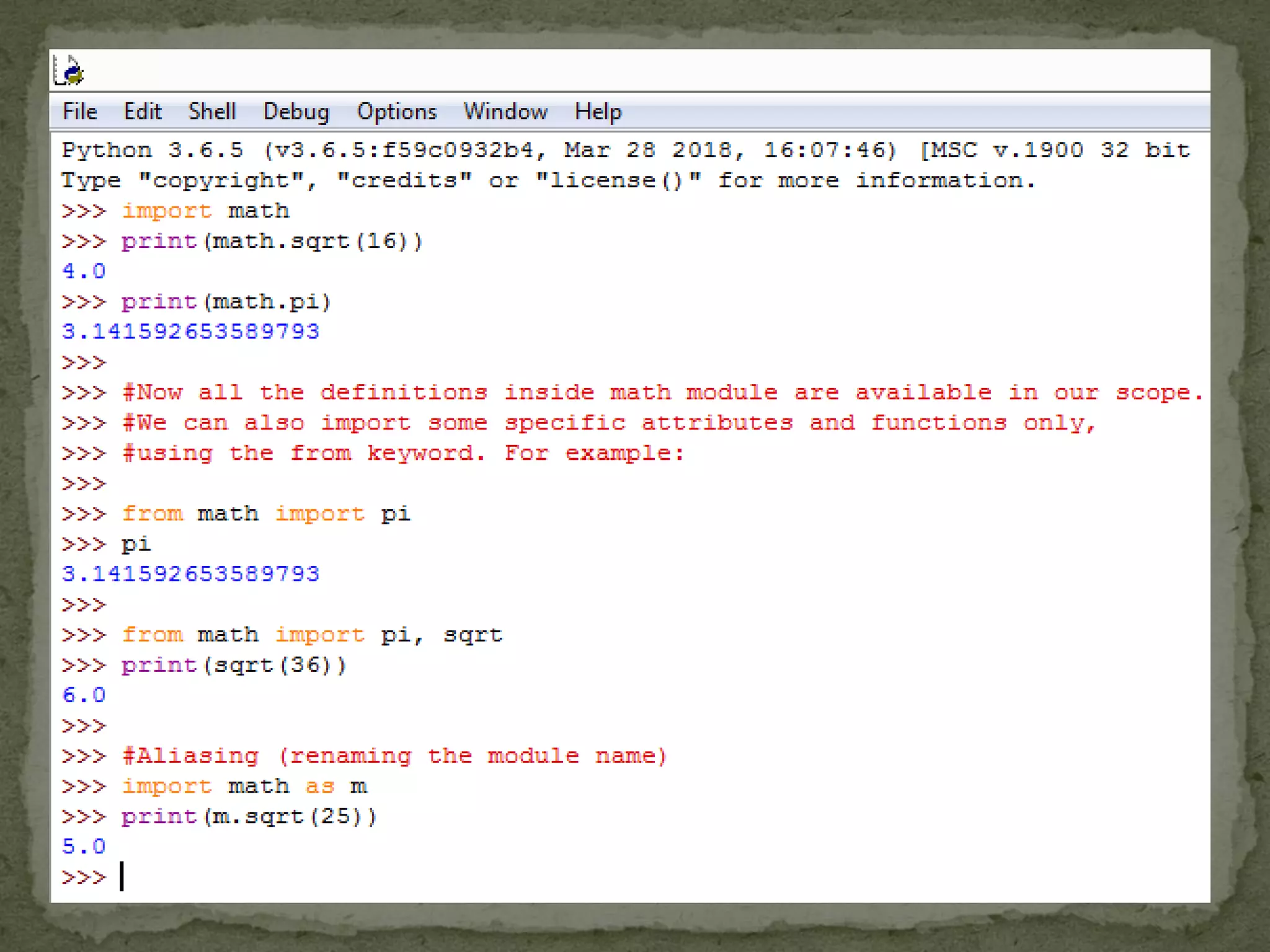The document discusses the changes in input functions between Python 2.7 and Python 3.x, highlighting the renaming of raw_input() to input() and the removal of the old input() in Python 3.x. It explains how to use these functions for user input and the need for typecasting when dealing with strings, as well as the use of the split() function for multiple inputs on a single line. Additionally, it covers the print() function's behaviors and formatting in both versions of Python, as well as the concept of modules and libraries.
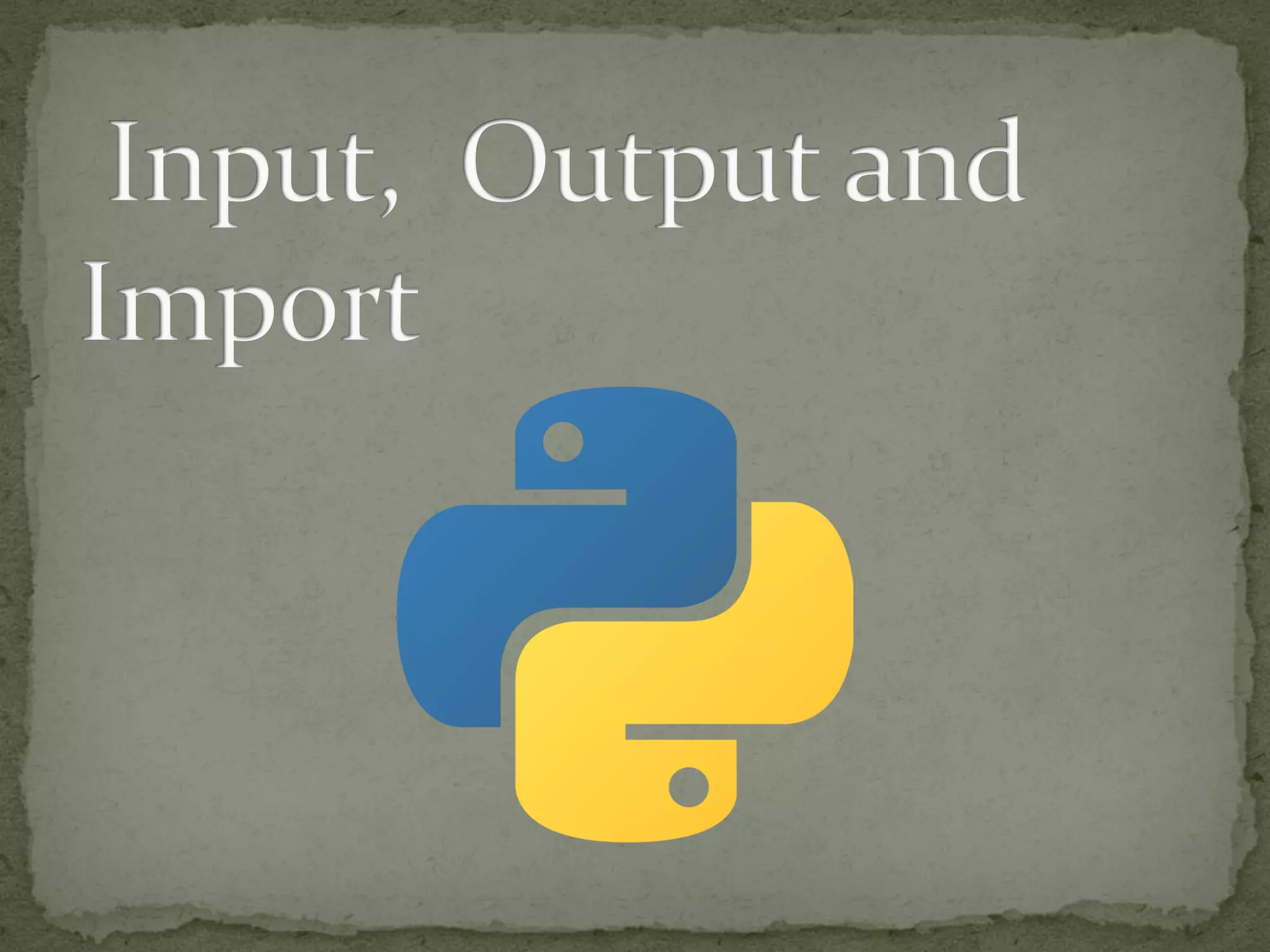
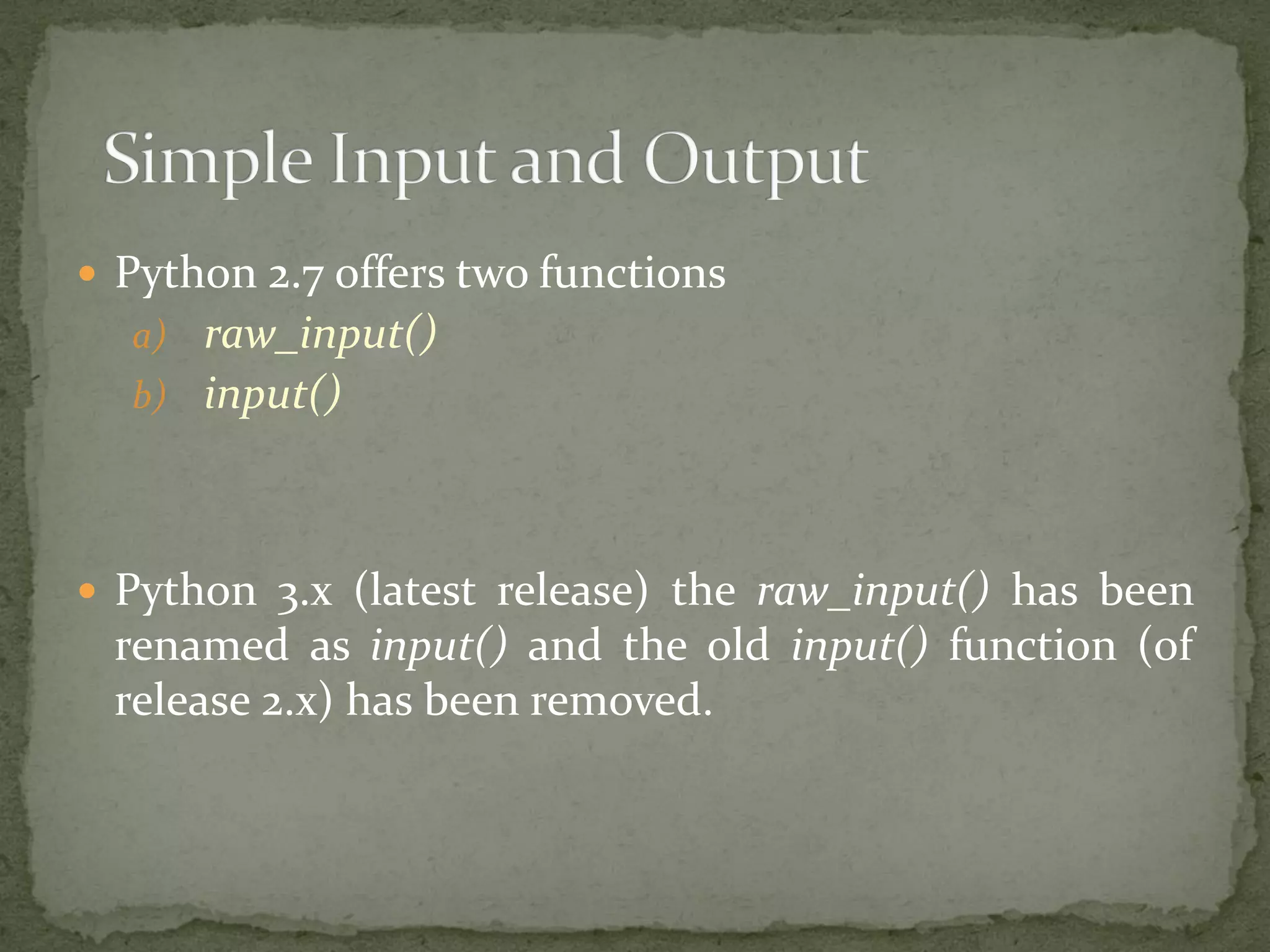
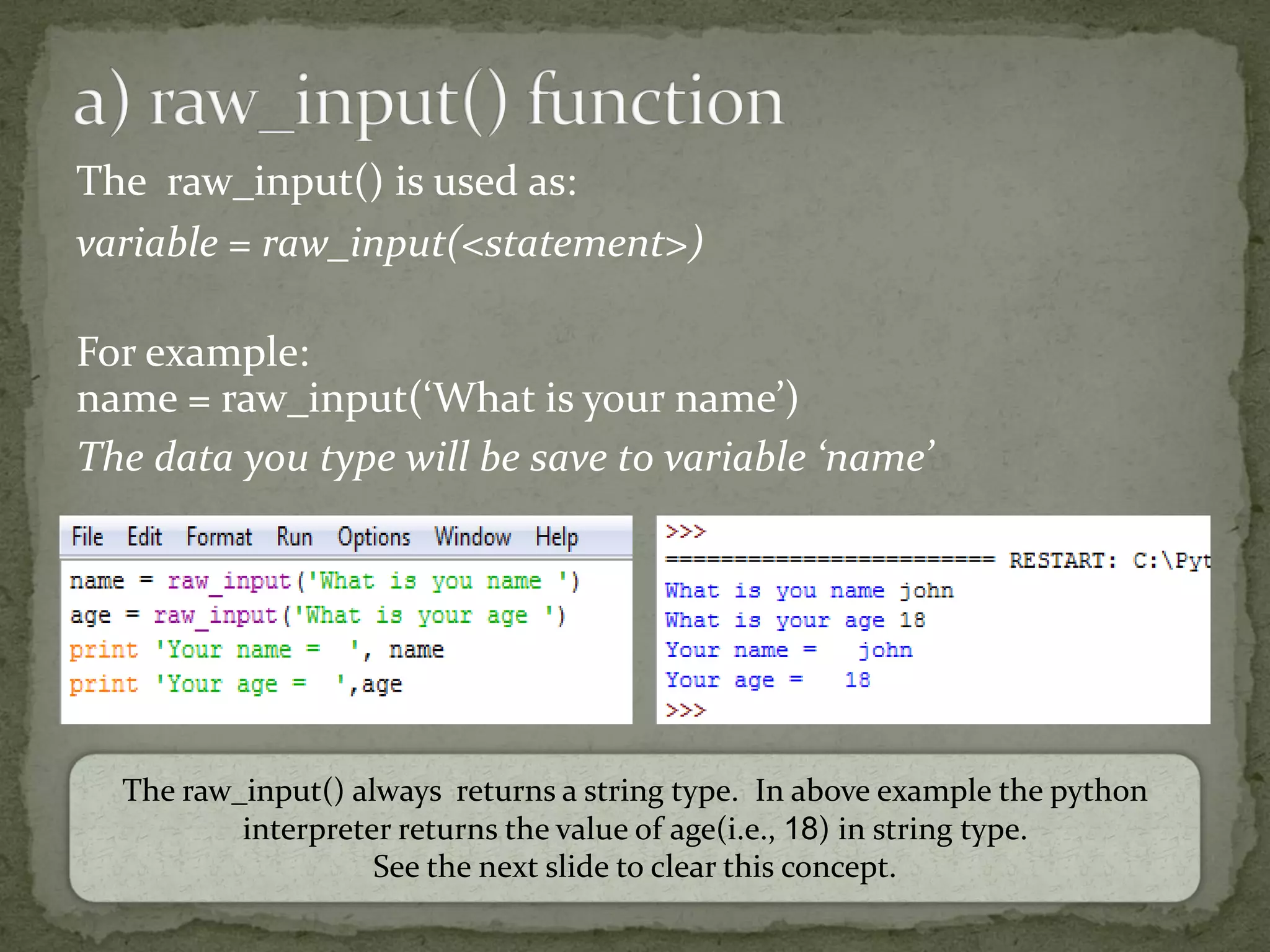
![ Python through an error, as Python cannot add integer to a
string.
It received 12 through raw_input() as a string.
We required to use typecasting functions with
raw_input()/input() [of python 3.x]](https://image.slidesharecdn.com/python-02inputoutputimport-180628100321/75/Python-02-Input-Output-Import-4-2048.jpg)
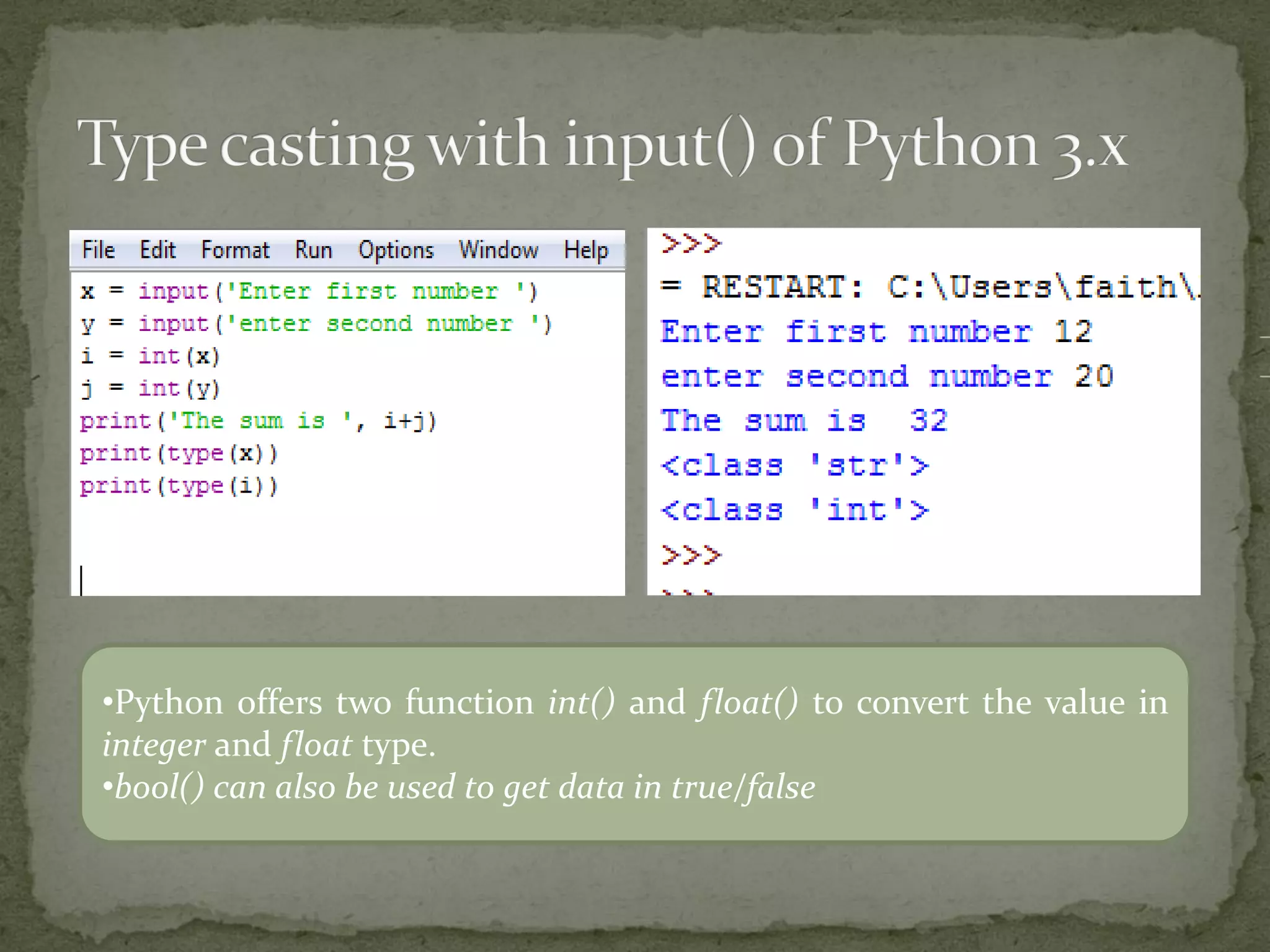
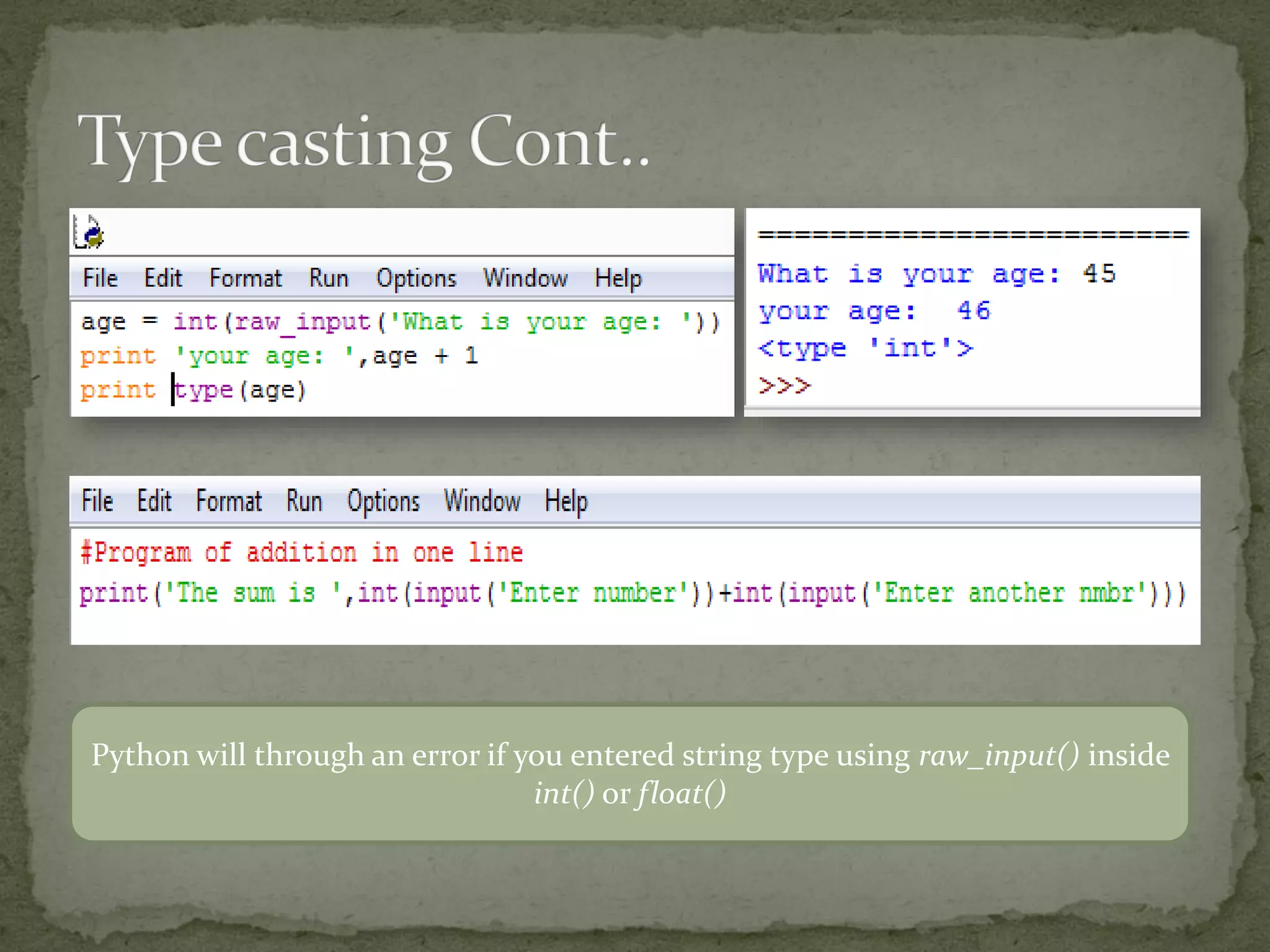
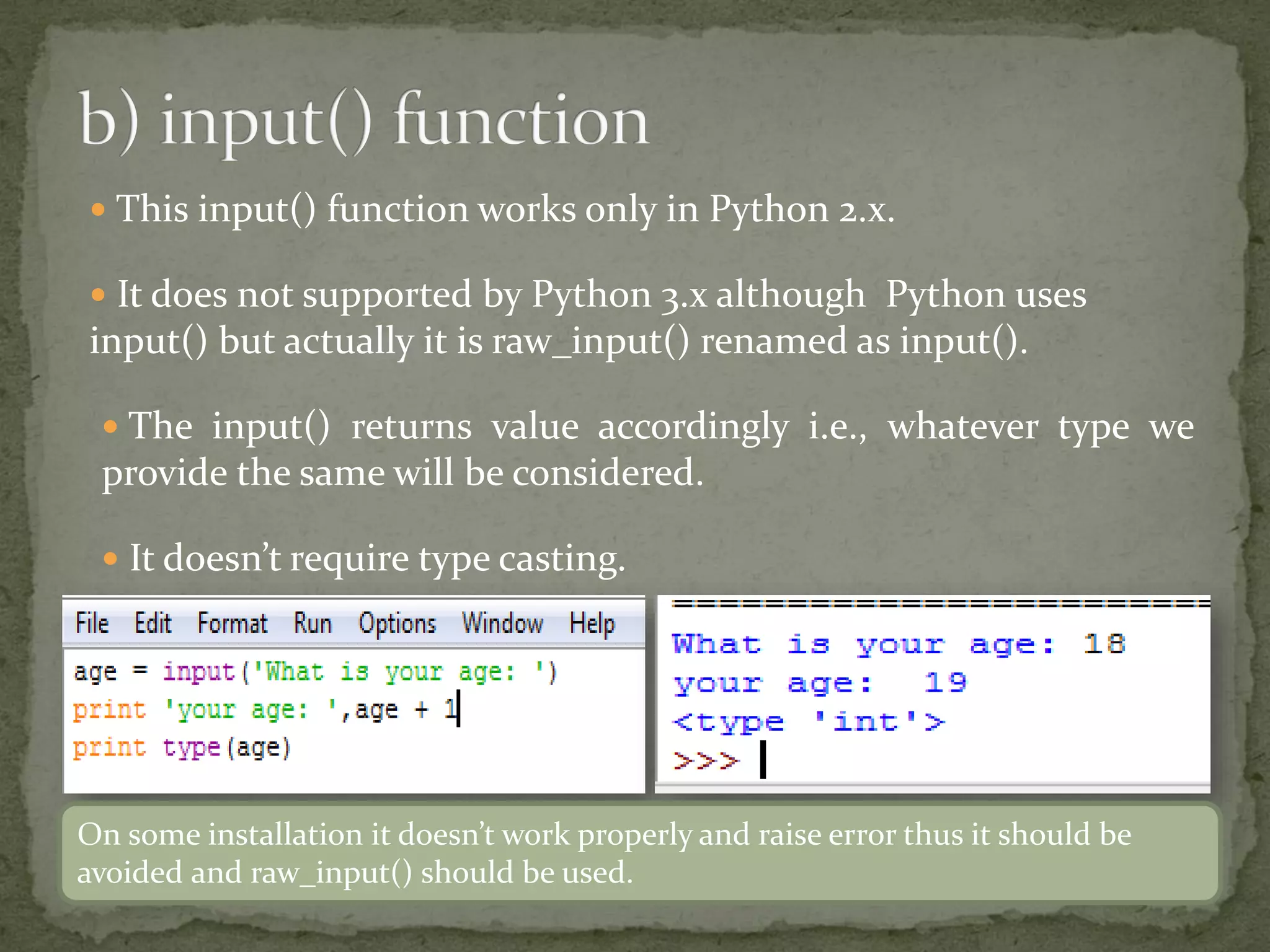
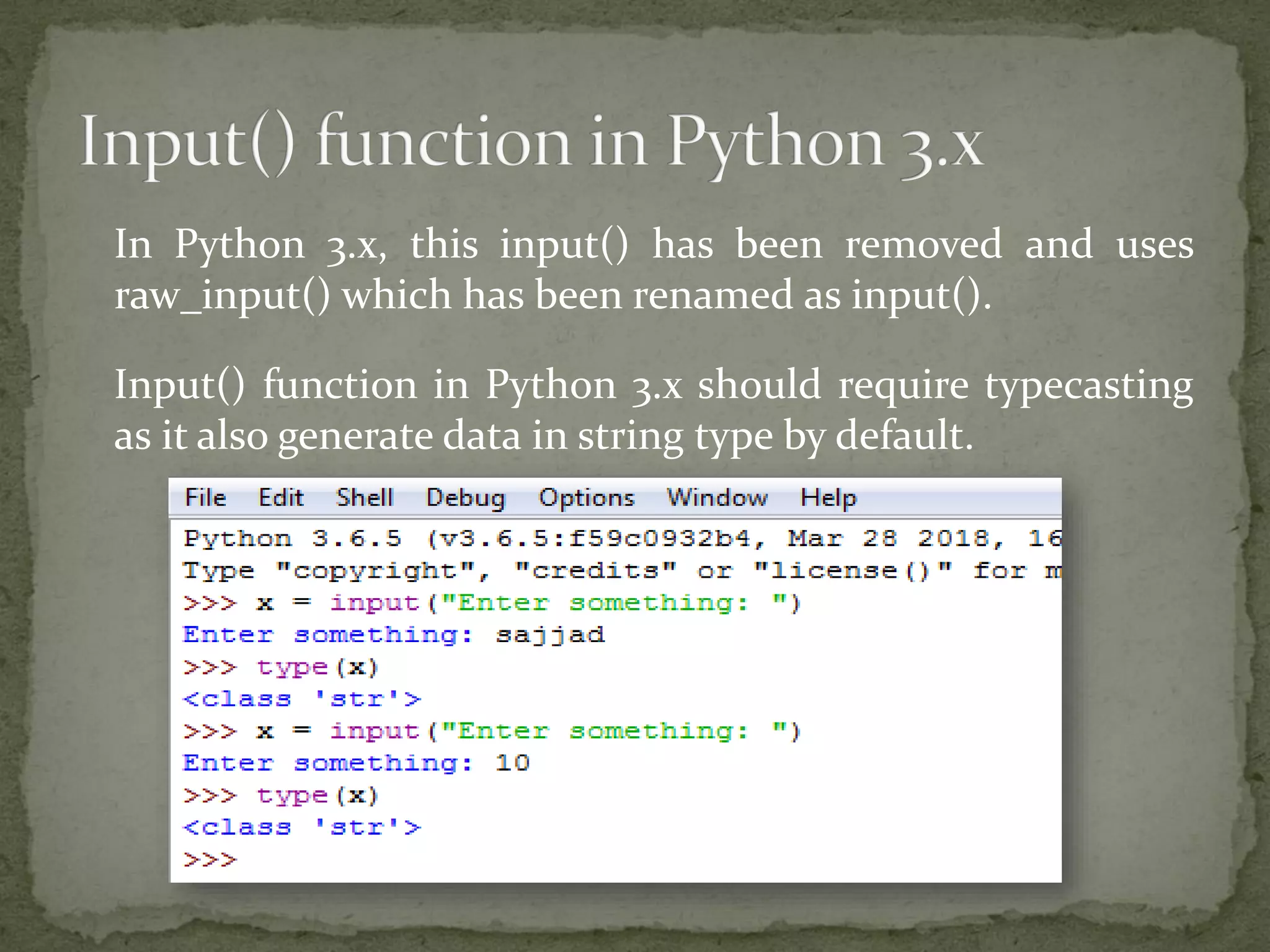
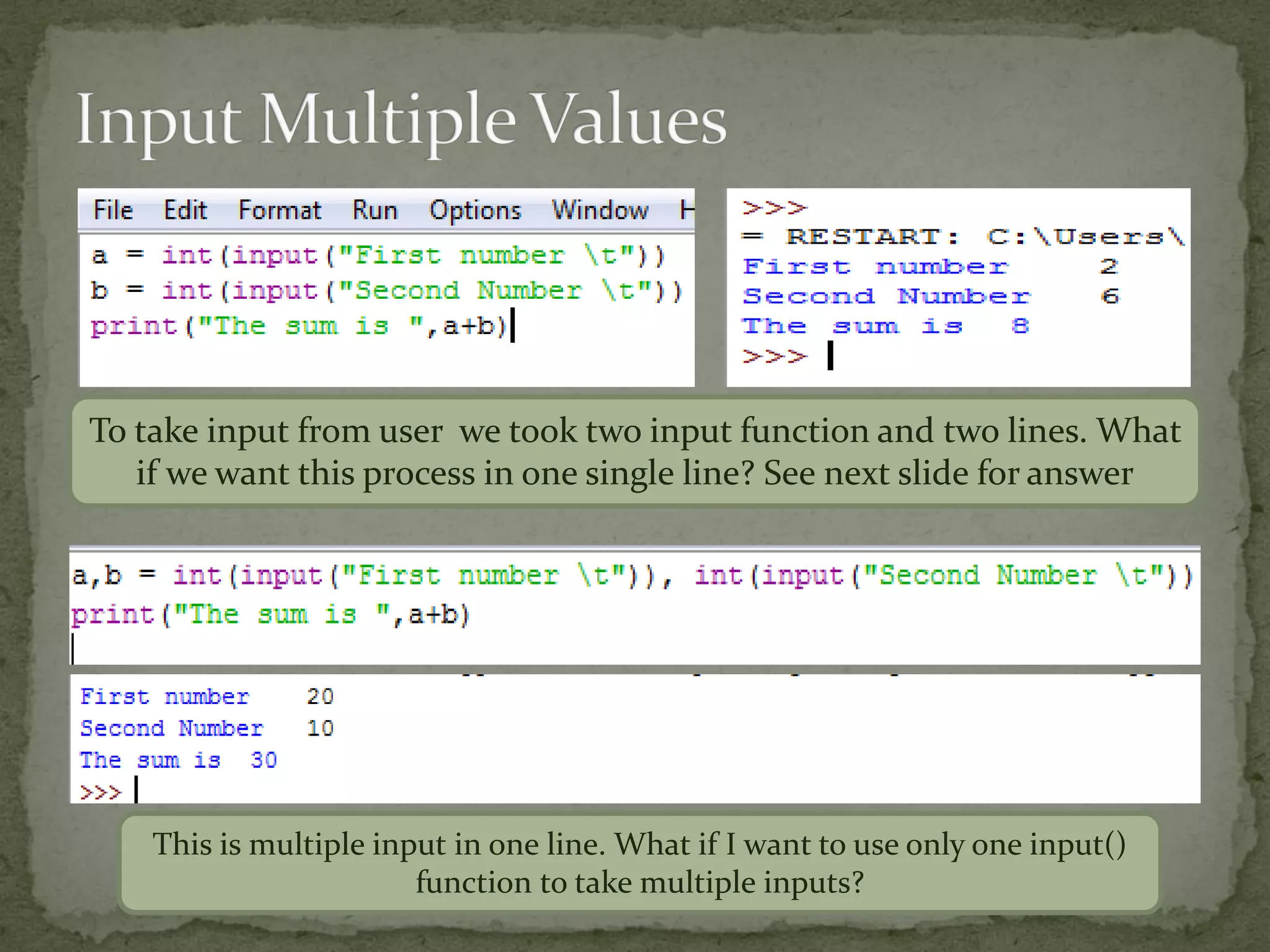
![ For this we use split() function
a, b = input(“Enter first and last name”).split()
Note in Python code,
both a and b would be
of string.
We can convert them
to int using
a, b = [int(a), int(b)]
We can also use list
comprehension, will discuss in
next slide](https://image.slidesharecdn.com/python-02inputoutputimport-180628100321/75/Python-02-Input-Output-Import-10-2048.jpg)
![a, b = [int(x) for x in input(“Enter two number:”).split()]
split() is a function/method used to split the input() function
into multiple values.
The method split() returns a list of all the words in the string.
split() is opposite of concatenation which combines strings
into one.
List of multiple values](https://image.slidesharecdn.com/python-02inputoutputimport-180628100321/75/Python-02-Input-Output-Import-11-2048.jpg)
